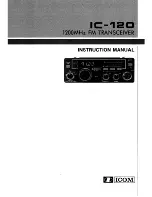
CMT2380F64
www. cmostek. com
Rev 0.3 | 47 / 83
Low power high performance Sub-G transceiver
Sub-G wireless transceiver supports 127 to 1020 MHz, OOK, (G)FSK,(G)MSK and other modulation modes, low power
consumption, high performance, suitable for all kinds of wireless communication applications. The product belongs to CMOSTEK
Next GenRFTM series, which includes transmitters, receivers and transceivers and other complete product series.
ARM Cortex-M0 high performance 32e bit micro-processor
The CMT2380F64 controller uses a 32-bit ARM Cortex®-M0 kernel, with a maximum operating frequency of 48MHz, up to 64 KB
encrypted Flash memory integrated, and a maximum of 8KB SRAM. Built-in a high-speed AHB bus, two low-speed peripherals
APB and bus matrix, support up to 23 general I/O, provide a wealth of high-performance analog interface, including a 12-bit 1Msps
ADC, Supports up to 12 external input channels, 1 independent operational amplifier, 1 high-speed comparator, and provides a
variety of digital communication interfaces, including 3 U(S)ART, 2 I2C, 2 SPI, and 1 I2S.
CMT2380F64 resources are shown as the follo wing table.
Table 3-1. CMT 2380F64 External Resources Table
Project Name
CMT2380F64 External Resources
Notes
Flash capacitance(KB)
64
SRAM capacitance(KB)
8
CPU kernal and frequency
ARMCortex-M0 @ 48MHz
Operating environment
1 . 8~3. 6V / -40~+85
℃
Timer
General
3
High level
16 interrupt source, 4 level priority
Basic
Enhance serial port
LPTIM
Support
RTC
Support
Communication interface
SPI
Support
I2S
Support
I2C
Support
USART
Support
LPUART
17
GPIO
23
4 of them are connected to the RF of SPI
DMA
5 channel
12 bit ADC
6-ch
1Msps
OPA/ COMP
1 / 1
Beeper
1
TWI& STWI
Algorithmic support
CRC16 / CRC32
Security protect
Read/write protect (RDP / WRP), Storage encryption
4 Sub-G Transceiver
4.1
Transmitter
The transmitter is based on direct frequency synthesis technology. The carrier is generated by a low noise fractional-N
frequency synthesizer. The modulated data is transmitted by an efficient single-ended power amplifier (PA). The output power
can be read and written via registers, step by step from -20 dBm to +20 dBm with 1 dB.
















































